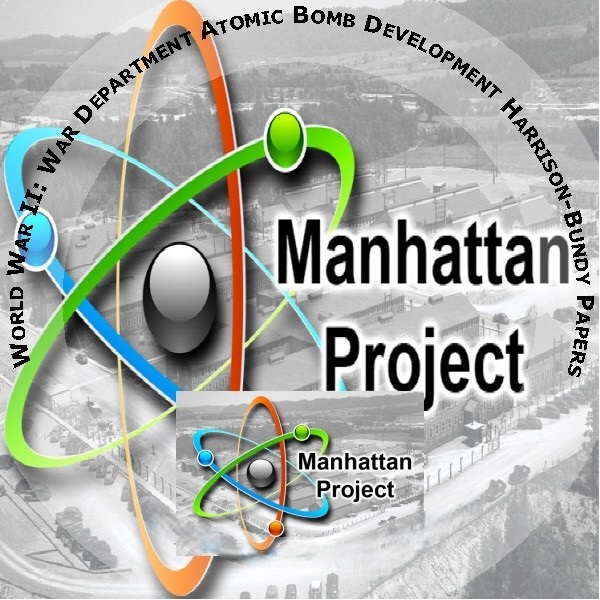
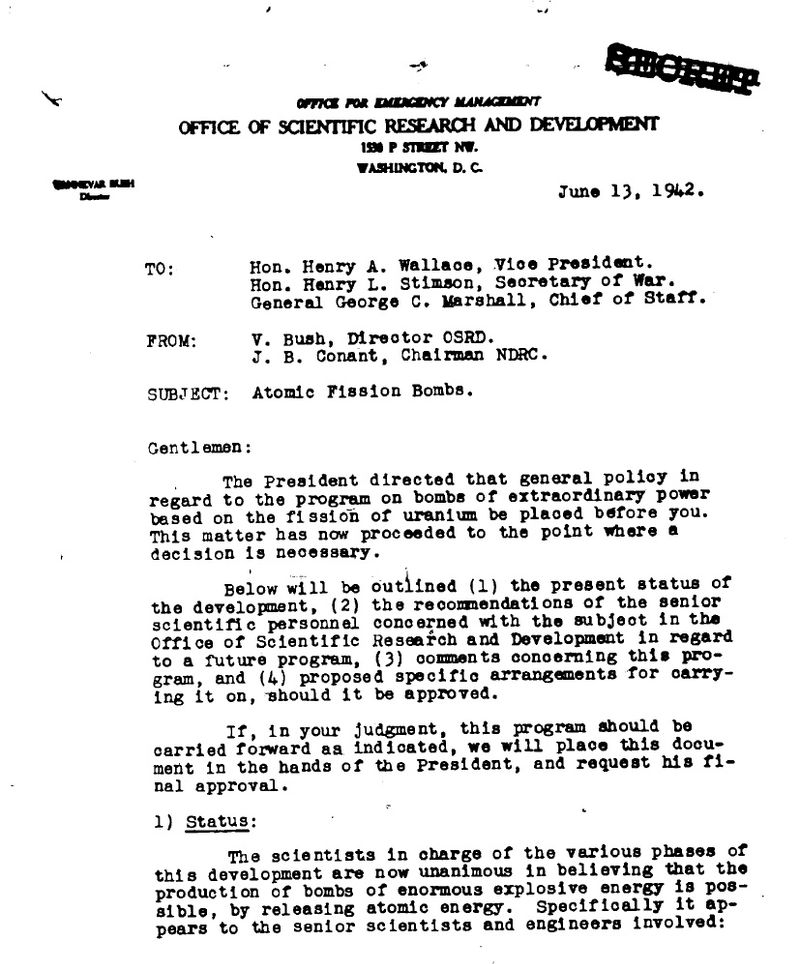
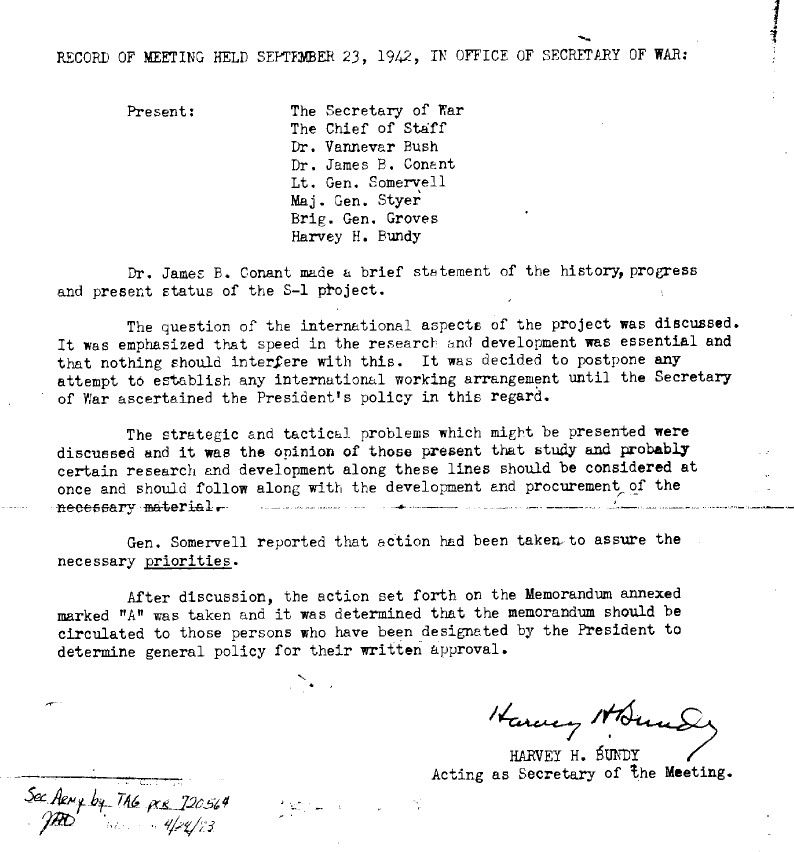
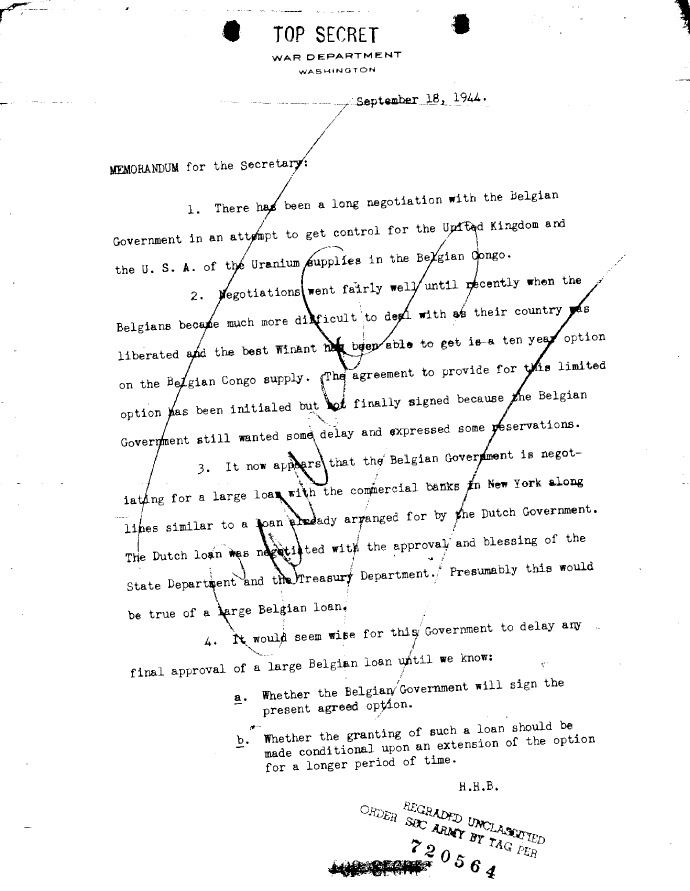
Harrison-Bundy Files on Atomic Bomb Development, War Department
$19.50
Description
Harrison-Bundy Papers: Manhattan Project Timeline and Key Figures
Timeline of Key Events (1942-1945)
- June 13, 1942: Memo conveying that scientists in a War Department workgroup were unanimous that an atomic bomb could be built.
- September 23, 1942: War Department meeting establishes the groundwork for the Manhattan Project. Top Policy Group is mentioned.
- August 19, 1943: Quebec Agreement between the U.S. and Britain concerning atomic research and development.
- December 23, 1943: Memorandum for the Secretary of War suggesting mentioning to the President that an August report on the S-l project has never been received back from White House with approval and Dr. Bush has further information about the German new weapon and its dangers.
- June 13, 1944: Combined Development Trust established. (Implied from mention in document description).
- February 15, 1945: Memorandum for the Secretary of War concerning the problem in getting necessary funds from Congress for the Manhattan project, recommending discussing with the Congressional group the possibility of sending 2 Senators and 2 Congressmen to principal installations for view of project.
- September 18, 1944: Memo on actions to put control of uranium supplies in the Belgian Congo in the hands of the Allies
- June 1945: Memos within the War Department show ideas about the use of an atomic bomb.
- June 26, 1945: Memo demonstrating worry among Manhattan Project scientists about what they have created.
- July 1945: Draft showing work on the War Department’s public statement to be given after the first use of an atomic bomb.
- July 14, 1945: Memo from a Manhattan Project scientist presenting a different view from the other scientists who wanted to slow the progress to the use of an atomic bomb
- July/August 1945: Petition, inspired by Leo Szilard, signed by 70 Manhattan Project scientists calling on the President to not use the bomb before demonstrating and informing Japan on its power
- August 2, 1945: (Implied) Truman’s note, “Release when ready, but not sooner than August 2,” concerning the atomic bomb.
- August 9, 1945: Classified message from the 313th Bomber wing, Tinian to War Department. Account of strike and accompanying airplanes after return to Tinian. Observing plane reported 20 minutes after explosion the southern edge of cloud was tangent to north end of Nagasaki harbor.
- September 1945: Henry Stimson retires as Secretary of War and transfers the Harrison-Bundy files to General Groves.
Cast of Characters:
- Henry L. Stimson: Secretary of War during WWII. Oversaw the Manhattan Project. The Harrison-Bundy Files were created and maintained in his office.
- George L. Harrison: Special assistant to Secretary of War Stimson. Liaison between Stimson, Groves, and other officials involved in the Manhattan Project. Alternate chairman of the Secretary’s Interim Policy Committee on Atomic Energy.
- Harvey H. Bundy: Special assistant to Secretary of War Stimson. Liaison between Stimson, Groves, and other officials involved in the Manhattan Project.
- Leslie R. Groves: Brigadier General of the Army Corps of Engineers. Military head of the Manhattan Project.
- R. Gordon Arneson: Administrative secretary to Harrison and Bundy. Maintained the Harrison-Bundy files. Served on the Secretary of War’s Interim Committee on Atomic Energy and as a member of staff on the U.S. delegation to the United Nations Atomic Energy Commission.
- Vannevar Bush: Chairman of the Office of Scientific Research and Development (OSRD). Oversaw wartime scientific research, including early atomic research.
- James B. Conant: Head of the National Defense Research Committee (NDRC). Worked with Bush on wartime science initiatives.
- Harry S. Truman: President of the United States. Made the decision to use the atomic bomb against Japan.
- Leo Szilard: Physicist who conceived the idea of a nuclear chain reaction and initiated the effort to urge the U.S. government to develop the atomic bomb.
- J. Robert Oppenheimer: Scientific director of the Manhattan Project’s Los Alamos Laboratory, where the atomic bombs were designed and built.
- Dean Acheson: Served in the State Department during the Truman administration.
- Niels Bohr: Danish physicist who made foundational contributions to understanding atomic structure and quantum theory.
- David Lilienthal: Chairman of the Tennessee Valley Authority (TVA) and later the first chairman of the U.S. Atomic Energy Commission (AEC).
World War II: Atomic Bomb Development Files of Harrison-Bundy
The Harrison-Bundy Files contain 9,038 pages concerning the atomic bomb’s development, sourced from materials at the National Archives.
George L. Harrison and Harvey H. Bundy acted as special assistants to Secretary of War Henry L. Stimson. The Harrison-Bundy Files, also referred to as the Arneson Files, record the Army’s involvement in creating and producing nuclear weapons. These documents span the years 1940 to 1950, with the majority dated between 1942 and 1946.
Harrison and Bundy coordinated communications between Stimson, Brig. Gen. Leslie R. Groves of the Army Corps of Engineers, and other officials engaged in the Manhattan Engineer District Project. Harrison worked as a special consultant to the Secretary of War from 1943 to 1947 and was an alternate chairman on the Secretary’s Interim Policy Committee on Atomic Energy. Bundy held the position of special assistant to the Secretary of War from April 1941 until September 1945. Capt. R. Gordon Arneson was the administrative secretary to the special assistants and kept these files organized.
The majority of the contents in the Harrison-Bundy Files are letters, reports, and memorandums. Other records include messages, telegrams, directives, notes, meeting minutes and agendas, historical accounts, drafts and final versions of speeches, press releases, legislation, international agreements, petitions, maps, charts, receipts for documents, and various printed materials. The correspondence mainly involves communication to and from key officials, including the Secretary of War and his special assistants, the Under Secretary of War, and General Groves along with his main aides. The correspondents encompass high-ranking government figures in the White House and various departments such as State, Interior, Justice, and Commerce; leaders from the OSRD, notably Chairman Vannevar Bush and James B. Conant from the NDRC; influential Senators and Congressmen; British and Canadian officials, including prime ministers, ambassadors, and various civilian and military representatives engaged in nuclear policy development; U.S. military personnel from the Army Chief of Staff’s office, the Chief of Engineers, Ordnance, Army Service Forces, and War Production Board; researchers and scientific organizations, as well as individuals from private industry and labor.
The correspondence addresses various topics, including technical, scientific, and financial issues; relationships with allied nations regarding nuclear matters, such as U.S. participation in international agreements like the Quebec Agreement of August 19, 1943, and the Combined Development Trust of June 13, 1944; interactions with Congress, including congressional inquiries into the Manhattan Engineer District; partnerships with private industry and labor unions; human resources and security concerns; the quest for essential natural resources; legislation and strategies for postwar nuclear energy management; and official government policies.
The subjects found within these files include:
Minutes from the meeting on September 23, 1942 (Top Policy Group) Appropriations – Congressional hearings Discussions on atomic energy with Britain and Canada Engagements with Du Pont and Imperial Chemical companies Military Policy Committee documentation – Minutes Combined Policy Committee meetings Intelligence reports Issues related to patents Security matters concerning the Manhattan Project Speeches and press releases from the Secretary of War Correspondence with scientists Canadian project – N. R. X. (Chalk River Reactor) The history of the atomic bomb
Related products
-
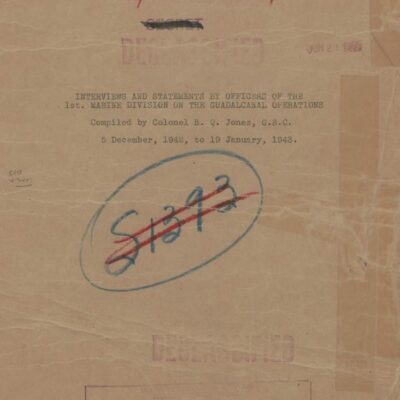
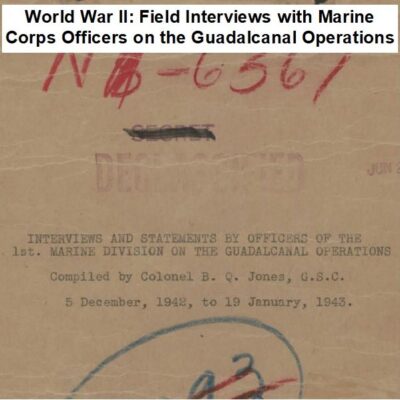
World War II: Marine Corps Officer Interviews on Guadalcanal Operations
$3.94 Add to Cart -
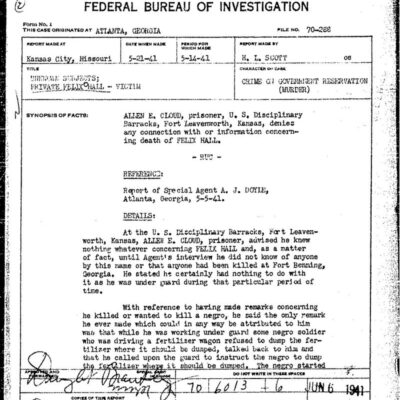
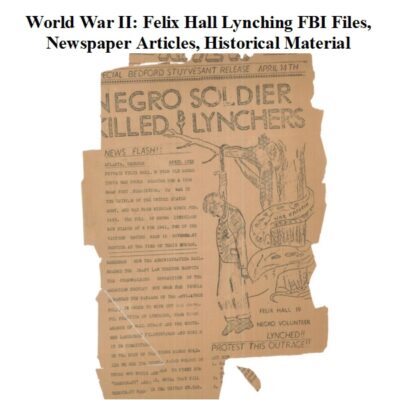
World War II: Felix Hall Lynching – FBI Files, Articles, Historical Records
$9.99 Add to Cart -


Operation POPEYE in the Vietnam War
$5.94 Add to Cart -
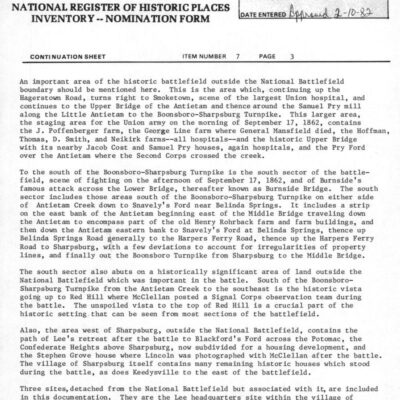
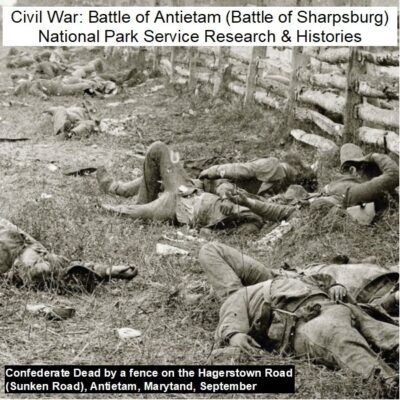
Civil War: Battle of Antietam (Sharpsburg) – National Park Service Archives
$9.99 Add to Cart